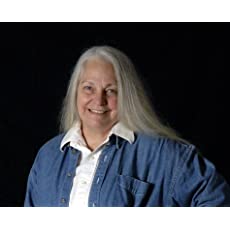Originally published March 3, 2013
As a writer of primarily nonfiction, I am often confronted with the need to explain a conclusion I arrived at without making the reader feel as though I am pushing some ideology or agenda. I want to provide food for thought; not pronouncements. Many guides on writing will tell you that the way to engage the reader is to present them with something of humanity, some changing moment, some conquest, or some goal. So, even in nonfiction, we have what we call a character arc or something similar that moves your concept from idea to conclusion. In order to accomplish this feat with historical people, the author needs to be able to pick and choose relevant individuals (and facts) from the time period in question, or from persons somehow connected to the events or their interpretation. Then these personalities can be used to convey the different points of view and how such views might resolve into the conclusion the author wishes to explore.
I am in the midst of such a process in my current work, Redefining Job and the Conundrum of Suffering. In order to make sure that I keep my text on point and not overwhelm the reader with an unnecessary gaggle of participants, I thought it would be helpful to discuss the issue with a fiction writer that I respect. Particularly someone who deals with moral growth in her characters. How, exactly, does she plot a character arc and can I use some of the same tools in selecting the supporting cast to my central figure? The author I chose is Dianne Lynn Gardner who is both an author and an artist.
I believe that character arc is one of the most important elements of story telling.
Being an author of young adult and middle grade fantasy, my stories are coming of age tales about youths confronted with obstacles they need to overcome. When faced with events and hardships that they are unfamiliar with, their character is going to change. It’s inevitable. I see it in real life, and I use that paradigm in my stories.
I want to take a step back though before I discuss character arc because Victoria posed the question: “How do your characters develop deeper morals without being preachy.”
During my most recent period of studying the art of writing I was introduced to John Truby’s instructional The Anatomy of Story. I was deeply impressed with his system because it was the only book I’ve come across (note– I haven’t read them all) that actually talked about theme and moral development as a plumb line in a story. I highly recommend it. After reading his book, I interpreted his ideas and formed my own blueprint for story writing.
This technique requires planning and is one reason I don’t thoroughly believe in writing by the ‘seat of my pants.’ (I think that’s the term many authors use). Since I really want to say something important in my stories, (writing for me is a form of inner expression) I must design the plot and conflict from the ground up.
For visual learners such as me, (I am an artist after all) the process begins by drawing a line in the center of our paper and giving it a name of some moral importance. This might be honor, honesty, integrity, or something along those lines. Then we take our characters, protagonists, antagonists and all their sidekicks and decide where each of those individuals stand in relation to that line. Are they indifferent? Do they care deeply? Which side do they stand on and how close are they to the middle? Indifferent would be far away, close would be passionately for or against, near to the line. One side will be negative (such as being loyal to evil) and the other positive. Immediately you can see how conflict will develop between the characters and how the main character will be tested.
This plumb line isn’t the plot. It isn’t an event and it isn’t defined in any obvious way. It’s simply the moral fiber of the story. It weaves in and out of everything that happens. The author is the only one aware of it. He or she sifts it into the story. In fact, the more subtle that “plumb line” remains, the more effective it is in developing the plot.
Now we can talk about that character arc. As I said earlier, all of the main characters should have some kind of growth. We all do. These people on paper won’t have a semblance of humanity if the trials and tribulations they go through don’t have some kind of persuasion over their ideas and inner being. They might grow backwards, but they will grow.
When I have a character that’s young and I want the story to be a coming of age story I’ll define what I want him to look like at the end of the story. Then I’ll create his personality so that he has to really work to get from point A to point B. I can do the same by first creating his character and giving him something to work toward, but I find it easier to work backwards, or to work toward the middle. I explained this process in another blog post during the tour for The Dragon Shield.
So in conclusion, if you develop your characters so that they are real, and give them goals, and obstacles along the way, always weaving around that plumb line of your story, you won’t come off preachy, and you’ll have meat your readers can chew on!
If you’d like to learn more about Ian and his dragons, check out Dianne’s blog.






No Comments